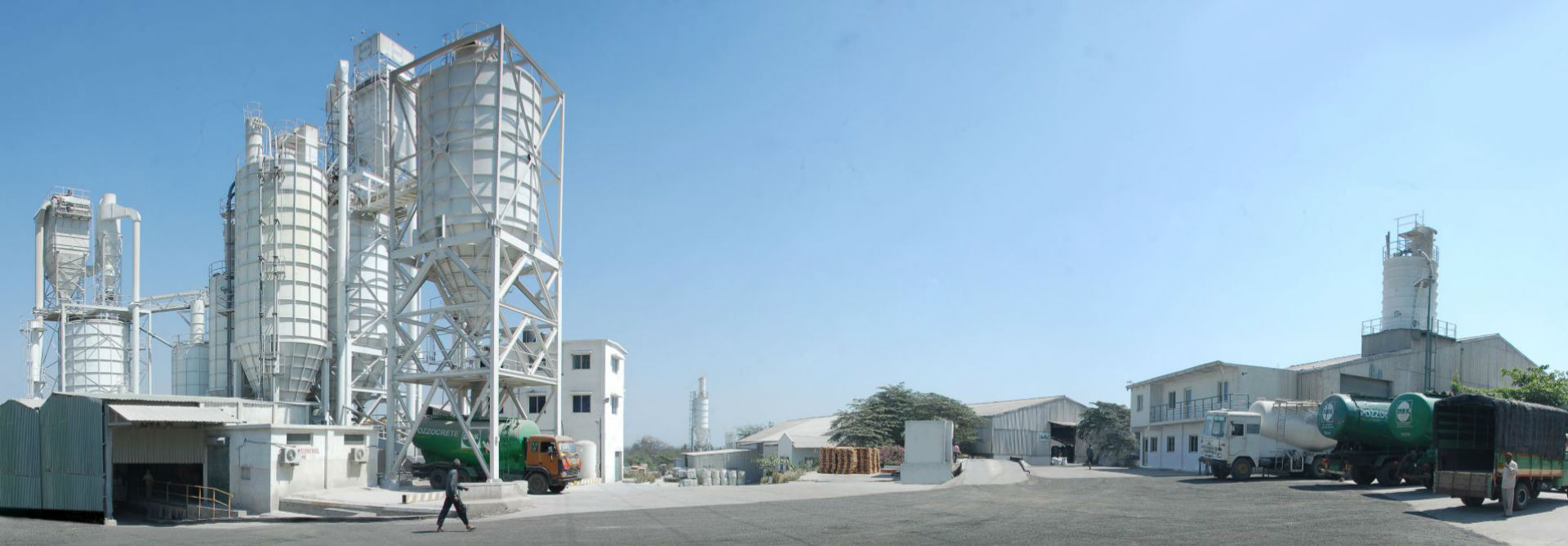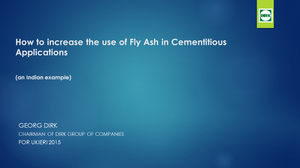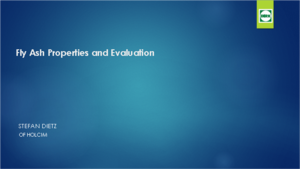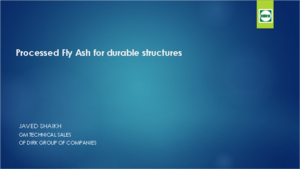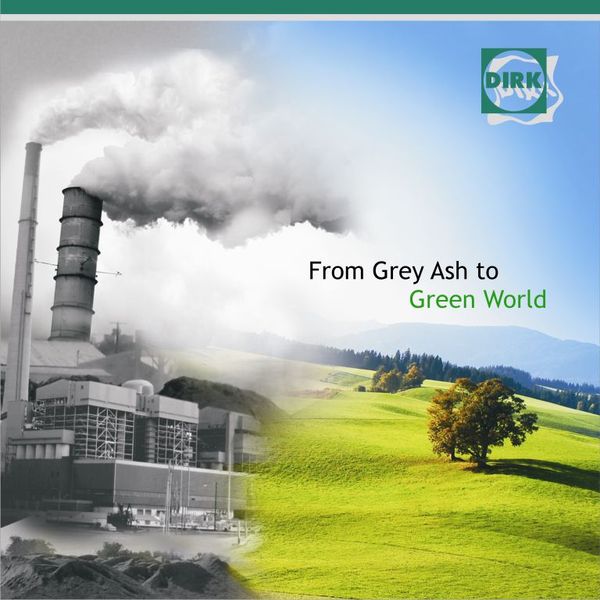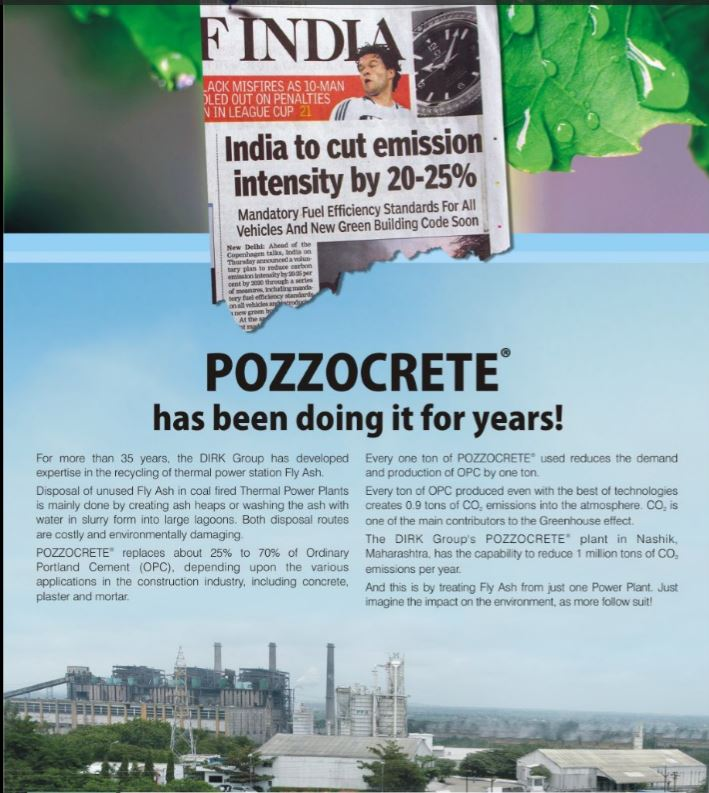
The problem:
From 1970 to 2030 world coal consumption will double. Asia is the leading continent in this increase.
India is currently producing 140 million tons of ash generated by its existing coal fired power stations. The shortage in the electricity supply to fuel the growth of Indian industries requires more power stations. Coal is readily available in India and most of the planned power stations will be again coal fired. Ash production will raise to 200 million tons/year by 2030. Approximately 80 % of all generated ash is Pulverized Fuel Ash (PFA) trapped in electrostatic precipitators to reduce the air pollution. Approximately 20% of all ash is Furnace Bottom Ash (FBA). In 2006 Indian statistics claimed that 50 million tons/year of PFA had not been disposed of but utilized in one way or the other. This means that 90 million tons of ash per year are disposed of into lagoons or on ash heaps. Large areas of arable land are covered with PFA deposits creating environmental pollution.
The solution: for a specific case
The Nashik PFA Recycling Project:
In the year 1999 Georg Dirk started to look at India for a PFA recycling project. At that time only around 1 million tons of ash was used in India.
In October 2000 the Maharashtra State Electricity Board signed a contract with DIRK India Private Ltd., for the recycling of all dry PFA from their Nashik Thermal Power Station by converting approximately 75% of the PFA generated at Nashik Thermal Power Station into “POZZOCRETE” the trade mark product of DIRK India Private Ltd.
POZZOCRETE is a processed and quality assured Fly Ash Product which is used as a partial cement replacement in concrete.
Shortly after signing the contract, Dirk India Private Ltd (DIPL) started to erect the plant, partly inside Nashik TPS but mainly on a 22.000 square metre plot allocated to DIRK India by MSEB, fence to fence with the power station.
The total cost of this project for a processing capacity of 2500 ts/day was IRs 43 crores. The plant has been extended by a PFA grinding facility. DIRK India’s Nashik plant consumed up to 1200 tons of raw PFA per day, only 50% of the generated PFA and its capacity, which was caused by certain restrictions imposed on DIRK India by the power generator.
The use of artificial pozzolans, like PFA , as a partial cement replacement, is a state of the art technology all over the world. In India it is mainly achieved by producing PPC cement products which contains up to 25 % PFA (PPC is produced by inter-grinding cement clinker with PFA). The alternative is inter-blending PFA and OPC in the concrete mixer. The cement replacement ratio by using quality assured and processed PFA (like POZZOCRETE) can be increased up to 70% for certain applications by inter-blending. The average replacement rate for quality assured fly ash products using inter-blending is around 30%. High replacement rates can only be achieved if the fly ash used as cement replacement is of a constantly reliable quality. Low replacement rates can be achieved with non quality approved fly ash up to a replacement rate of 15%. This is the road to mass uptake of fly ash. As an example: The cement consumption in the biggest Indian state of Maharashtra is around 10 million tons/year. The difference between 15 and 30% replacement means in actual figures an additional beneficial use of 1,5 million tons/year.
The environmental aspect:
From an environmental angle the cement replacement by PFA is a must as each ton of cement replaced by PFA means approx. one ton of CO2 emission saved as well as savings of other natural resources (energy and limestone) consumed when producing cement. Currently the production of cement creates approx. 1 ton of CO2 emissions. By selling POZZOCRETE as a partial cement replacement DIRK’s Nashik plant saves 1200 tons of CO2 emissions per day.
Raw PFA is no secure partial cement replacement:
In most of the industrialised countries the largest amount of beneficial fly ash use is in the sector of cement replacement. This is achieved by processing of fly ash. To differentiate between an unprocessed “raw PFA” and a processed PFA, such a processed ash is normally branded. The branded fly ash Pozzocrete is produced under the ISO 9001 quality control systems. Dirk Group has been also awarded ISO 14001. The Pozzocrete products meet all Indian Standards for PFA in concrete as well as the important European Standards for high percentage cement replacement. Processing is necessary as the power generators cannot provide ash of a certain stable quality to assure that the ash meets the requirements given by Standards. An independent quality verification is required and provided by the Bureau of Indian Standards. Verified PFA products bear the ISI Standard Mark (which is mandatory for cement).
Knowledge-transfer
Cost effective high replacement of Ordinary Portland Cement (OPC) by PFA products requires solid advice to the concrete producer. DIRK India established for this the Maharashtra Fly Ash Information Centre which has been organizing training courses and workshops for the construction fraternity, concrete consultants and the general public interested to learn how PFA can be used without negative impact on the environment.
PFA is a wealth generator said the hon. Indian President Abdul Kalam
Finally: the use of Fly Ash products to partially replace cement has positive financial implications. Every cubic metre of concrete produced with processed PFA and OPC reduces the cost by 20% compared to the same cubic metre of concrete produced only with OPC or PPC.
PFA + OPC results into improved concrete quality
Besides the economic driver for the use of processed PFA in concrete, there is a number of positive effects which improve the quality of resulting concrete in the parameters of improved workability and increased durability. These effects are well proven and accepted as PFA credentials worldwide. As a result of this quality improvement of concrete Indian PFA is exported to the Middle East, Asia and Africa. Although the exported PFA product is more expensive than cement in these countries (caused by high shipping cost), processed PFA is bought merely for quality improvement of concrete.
Conclusion
PFA can be converted from a mere waste into a sought after commodity. This will result in less pollution, reduced environmental impact, and a reduction of CO2 emissions.
20% less concrete cost means 20% more urgent needed infrastructure can be built with the same public spending.

